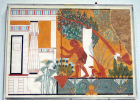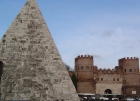Chronological Understanding
Sequencing, events, stories, pictures and periods over time to show how different times relate to each other and contribute to a coherent understanding of the past. You don’t have to teach topics in chronological order but need to relate the topics you teach to their chronological context.
-

Little coins, big histories
ArticleClick to view -

Making the most of a visit to the Museum of London Docklands
ArticleClick to view -

Teaching Robin Hood at Key Stage 1
ArticleClick to view -

Timelines in teaching history
ArticleClick to view -

Coherence in primary history: How can we get children to see that their history links up?
ArticleClick to view -

Whatever did the Greeks do for us?
ArticleClick to view -

Recorded webinar: How has warfare changed over time?
ArticleClick to view -

Back to basics: How might we organise historical knowledge?
ArticleClick to view -

Teaching Ancient Egypt: developing subject knowledge
ArticleClick to view -

Ancient Sumer: the cradle of civilisation
ArticleClick to view -

‘Come all ye fisher lassies’
ArticleClick to view -

A cultural legacy: the theatre of ancient Greece
ArticleClick to view -

Ankhu and Nebu of Deir el Medina
ArticleClick to view -

Developing early history skills and understanding through the EYFS
ArticleClick to view -

The Elizabeth cake
ArticleClick to view -

‘Miss, did the Romans build pyramids?’
ArticleClick to view -

Getting to grips with concepts in primary history
ArticleClick to view -

The history of medicine – warts and all – for Key Stage 2
ArticleClick to view -

Resources for courses: ideas for your history curriculum
ArticleClick to view -

Trade and pilgrimage in the Abbasid Caliphate
ArticleClick to view

